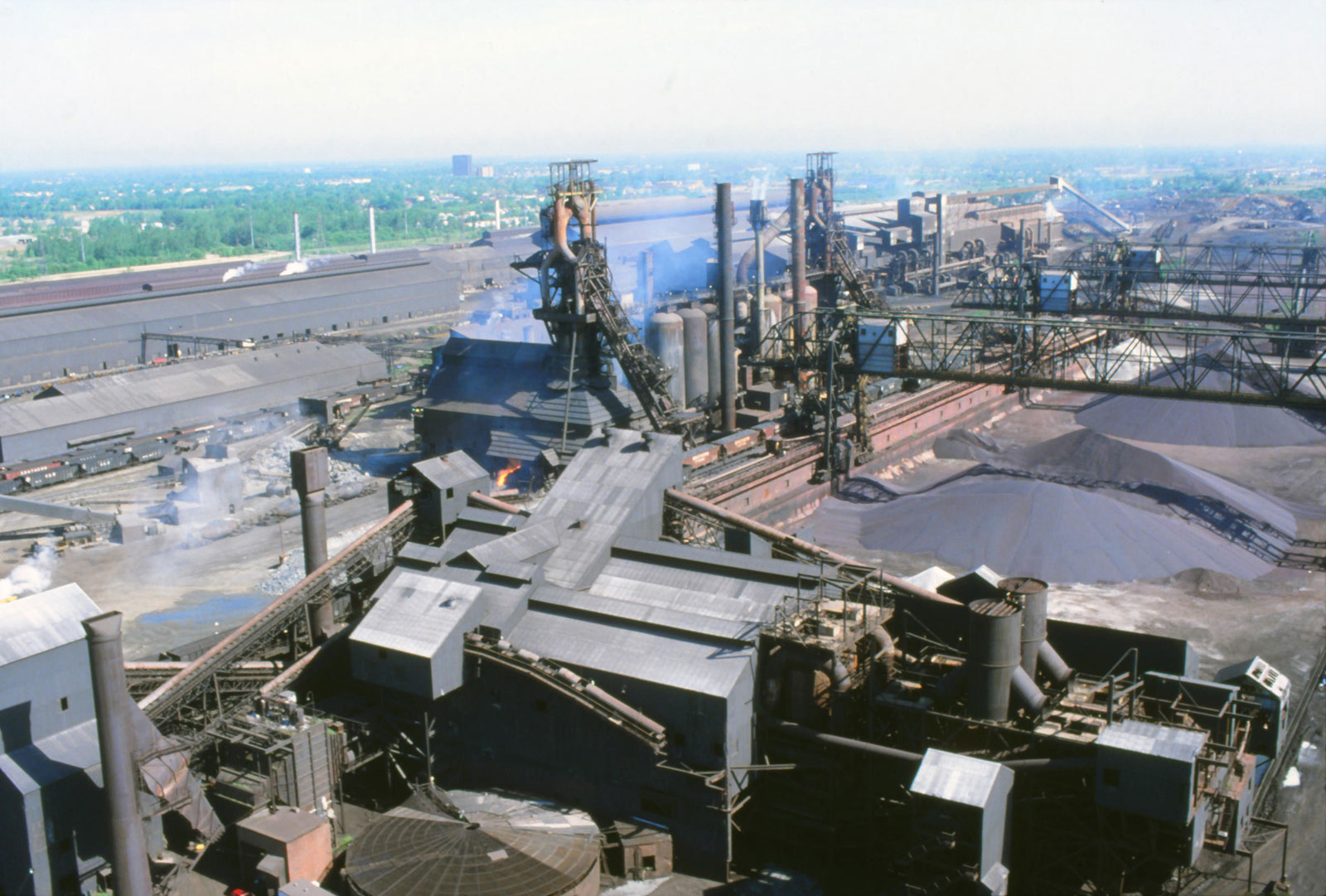
A 25-year challenge for USEPA, MDEQ
Clean-up of a long-defunct and toxic site on prime real estate that borders the Detroit River has taken a positive step forward.
Federal agencies and the Michigan Department of Environmental Quality (MDEQ) approved an agreement for remediation of the former McLouth Steel site in Detroit’s industrialized Downriver area.
McLouth stopped producing steel in 1995 when the company filed for bankruptcy. Subsequent attempts to revive steel production were not successful.
The hulking mill on the Trenton channel of the river facing Grosse Ile is plagued by hazardous substances including asbestos and PCBs.
The agreement allows for purchase of the site by Crown Enterprises and MSC Land Company (MSC) and provides them with certain legal protections, according to a U.S. Environmental Protection Agency press release.
The companies were not responsible for the contamination of the property, the EPA said.
The deal will provide clarity for the companies related to their responsibilities while the EPA investigates and manages the existing contamination.
The agreement includes a covenant that the companies will not be sued. It requires MSC to take action at the largest area of the site including demolition of 45 buildings and removal of asbestos material and containerized waste material containing PCBs.
For issues at the largest portion of the site not covered by the agreement, the EPA proposes adding the area to the federal Superfund program which will make it eligible for federal funding.
25-year challenge
Trenton City Administrator Scott Church said the agreement provides a path for remediation of the former McLouth site and that “it is the City’s hope that responsible redevelopment of the site will provide environmental and financial benefits in our community and throughout the region.”

U.S. Representative Debbie Dingell, Photo by Peter Smith via flickr.com
Trenton is in the district of Congresswoman Debbie Dingell and she told Great Lakes Now that “cleaning up the McLouth site has been a challenge for nearly 25 years.”
Dingell said the agreement reflects a first step and she urged people to look forward for progress versus reflecting on the 25-year process to date.
“We still have a long road ahead of us and we remain vigilant in cleaning up the site, taking down the buildings, and protecting the ground, air, and water and ultimately redeveloping the site,” Dingell said.
Echoing Dingell’s call for vigilance is Detroit environmental attorney Nick Schroeck who has been tracking efforts to move remediation forward and he’s concerned about the PCBs on the site.
“Cleaning up the PCBs and making sure that they aren’t migrating to the Detroit River or to groundwater below the site is really important,” Schroeck said.
Schroeck directs clinical programs at University of Detroit Mercy School of Law.
He said another critical component of the work will be how closely EPA and MDEQ monitor the cleanup and to what standard it is done. Depending on the cleanup standards, the site could end up to the point where only industrial use would be allowed, according to Schroeck.
“If Trenton would like another type of use for the property in the future, like residential or retail, then the final cleanup standard would be more stringent,” Schroeck cautioned.
Legacy pollution meets a wildlife refuge
The contaminated McLouth site, 20 miles south of downtown Detroit, is at the juncture of the river where legacy pollution meets environmental restoration at the International Wildlife Refuge on Grosse Ile.
The refuge has been hailed as an example of what can be accomplished when federal, state and local entities collaborate to restore the river that runs through a heavy, legacy industrial corridor with multiple contaminated sites.
But the Detroit River remains an officially designated Area of Concern because of remaining legacy contaminants like PCBs. The EPA says it will be 2025 or longer before cleanup work on the river is complete due to its complexity.
That means the river will continue to be a drag on Detroit’s recovery as a city.

Nick Schroeck, director of the Transnational Environmental Law Clinic, courtesy of Wayne State University
The clean-up work under the McLouth agreement applies only to the site and not to PCBs or other toxins that may be in the river adjacent to the site. Some investigation work has been conducted to see if federal Great Lakes restoration funding could be used in the river near the site, according to EPA spokesperson Rachel Bassler in the agency’s Chicago office.
In an EPA public comment session, concerns were expressed about a wide range of issues including protecting the Detroit River, use of a non-residential PCB cleanup criteria and enforcement.
Detroit Mercy environmental attorney Schroeck says enforcement of the agreement is critical.
“Without ongoing monitoring and enforcement by the responsible agencies, long-term toxic remediation projects like McLouth can drift into non-compliance squandering time and resources.”

